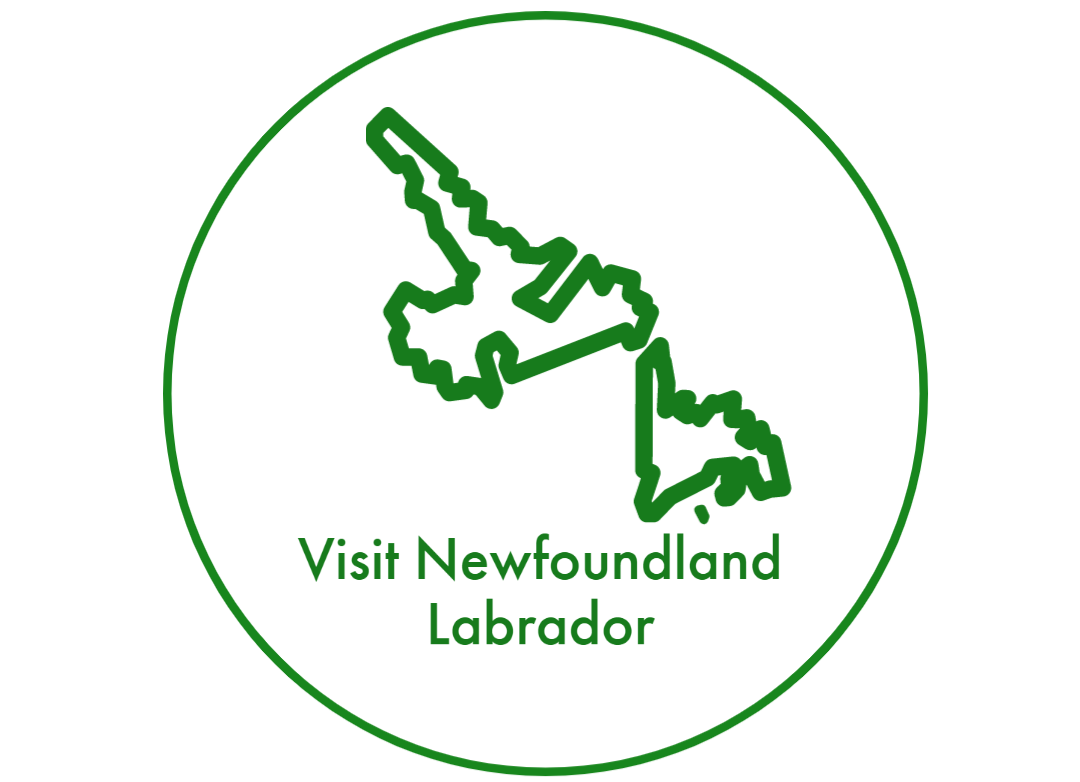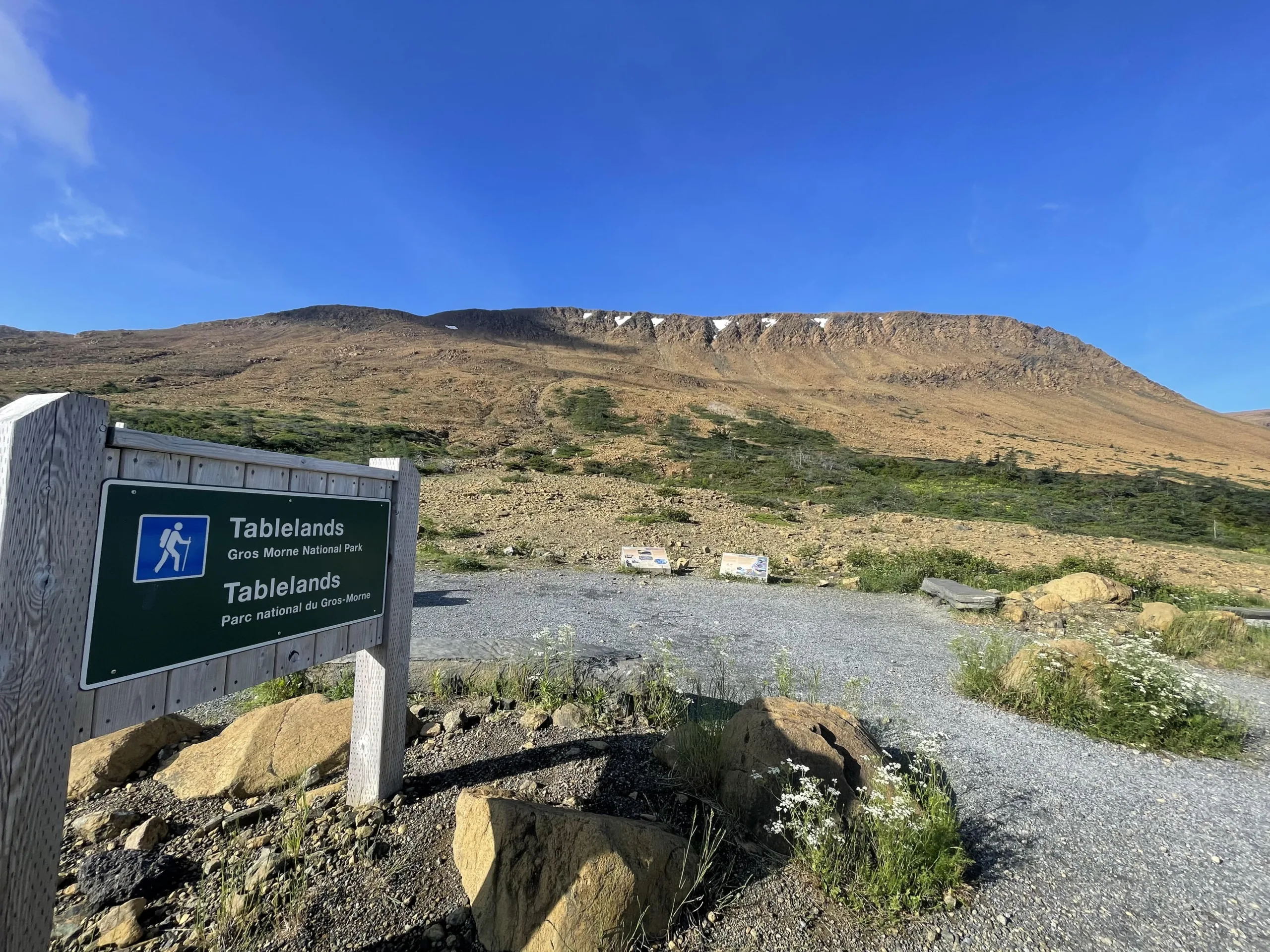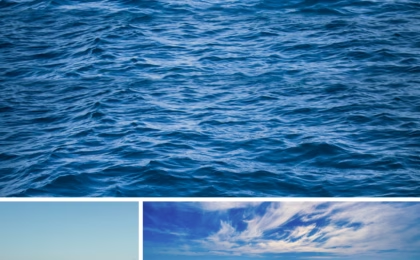Iceberg Alley Adventure
Iceberg Alley Adventure: A dedicated guide focusing on iceberg viewing, including prime viewing spots, information on iceberg formation, and boat tours for closer encounters.
Ultimate Newfoundland Iceberg Viewing Guide
Newfoundland and Labrador, famously known as Iceberg Alley, is one of the world’s premier destinations for iceberg viewing. Massive icebergs drift down from Greenland each spring and early summer, creating a spectacular display along the province’s coastline. Whether you’re an adventurer, photographer, or nature enthusiast, this guide will help you make the most of your iceberg-viewing experience.
Prime Iceberg Viewing Spots
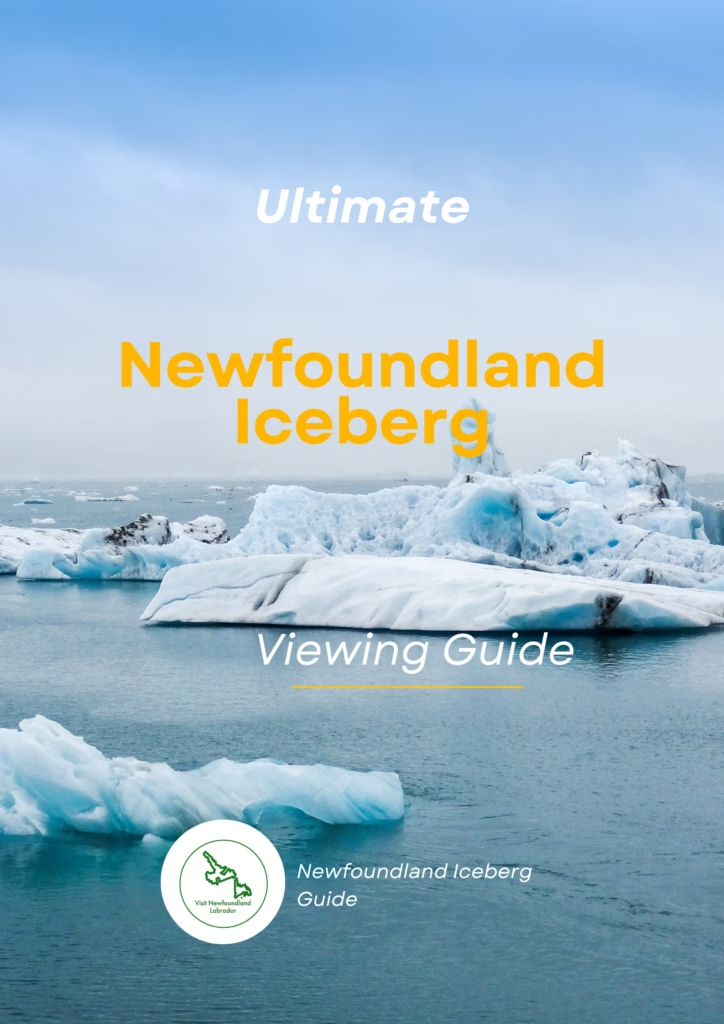
Twillingate
Known as the “Iceberg Capital of the World,” Twillingate is a must-visit destination. The town offers numerous vantage points, including:
Long Point Lighthouse: A scenic lookout with panoramic views of the North Atlantic.
Walking Trails: Coastal trails like the French Beach Trail provide excellent iceberg viewing opportunities.
St. Anthony
St. Anthony is another top spot for iceberg viewing on the Great Northern Peninsula. Highlights include:
Fishing Point Park: Features viewing decks and interpretive panels.
Daredevil Trail: The Dare Devil Trail offers an unparalleled hiking experience. This challenging trail ascends to approximately 400 feet. The summit rewards you with views of the surrounding landscapes.
Whale Watchers Trail
This scenic trail offers visitors the unique opportunity to witness some of the world’s most majestic marine creatures while enjoying breathtaking views of the rugged coastline and the Atlantic Ocean.
Iceberg Alley Trail
The Iceberg Alley Trail is an easy-to-moderate hike suitable for all ages and fitness levels. See breathtaking views of towering icebergs.
Cartier’s View Trail
Cartier’s View Trail is teeming with opportunities to spot wildlife. During the summer, you might catch sight of humpbacks and minkewhales breaching in the distance.
Fogo Island
Fogo Island offers a mix of iceberg viewing and cultural experiences. The Fogo Island Inn provides luxurious stays with iceberg views directly from your room.
Brimstone Head: A View from the Edge of the Earth. It is famously called one of the “Corners of the Flat Earth” by the Flat Earth Society. This rugged cliff offers unparalleled views of the North Atlantic Ocean.
Joe Batt’s Point Trail: This scenic trail in the community of Joe Batt’s Arm takes you along the coastline, offering stunning views of icebergs, wildlife, and the Atlantic Ocean.
Lion’s Den Hiking Trail: Located on Fogo, this trail provides peaceful coastal vistas and opportunities to spot icebergs and seabirds.
Tilting Harbour: This traditional fishing community is a charming spot for iceberg viewing, with its historical stages and picturesque harbour adding to the experience.
Bonavista Peninsula
This area is rich in history and iceberg sightings. Key spots include:
Cape Bonavista Lighthouse: A picturesque location for spotting icebergs.
Elliston Puffin Viewing Site: Combine iceberg and puffin watching in one trip.
Spillars Cove: Known for its striking sea stacks and dramatic cliffs, this area provides a quieter, less crowded place to watch icebergs drift past. The coastal trail offers fantastic views, making it a favourite among hikers and photographers.
Dungeon Provincial Park: This park is famous for its sea caves and coastal scenery. The park offers viewpoints to spot icebergs while exploring the geological marvels of the area.
Remember these tips
Timing Matters: Icebergs are most abundant from late April to early June, depending on the season.
Bring Binoculars and a Camera: While many icebergs are visible to the naked eye, binoculars allow a closer look at their intricate textures.
How Icebergs Are Formed
Icebergs are born from glaciers in Greenland and the Arctic. Over thousands of years, compacted snow forms dense glacial ice. When pieces of these glaciers break off—a process known as calving—they become icebergs.
These frozen giants can range from small “bergy bits” to massive structures towering over 150 feet above the water. Only about 10% of an iceberg’s mass is visible above water, making their underwater presence even more awe-inspiring.
Icebergs drift southward, carried by the Labrador Current. They begin their journey in spring, peaking in Newfoundland waters between April and June. By July, warmer waters often cause the icebergs to melt.
Best Time to See Icebergs
Newfoundland and Labrador prime iceberg viewing season runs from late April to early July. The exact timing to see bergs varies depending on weather conditions and the movement of the Labrador Current. For the best experience:
Plan for early May to mid-June for optimal iceberg sightings.
Monitor local iceberg reports using websites like IcebergFinder.com.
Boat Tours for Close Encounters
Consider booking a boat tour to appreciate the size and beauty of icebergs truly. Here are some of the top-rated options:
Twillingate Adventure Tours
Offers guided boat tours with knowledgeable captains who share local history and iceberg facts.
Website: twillingateadventuretours.com
Northland Discovery Boat Tours (St. Anthony)
Specializes in iceberg and whale-watching tours.
Website: discovernorthland.com
Iceberg Quest Ocean Tours (St. John’s)
Departing from St. John’s, this tour offers iceberg, whale, and puffin sightings.
Website: icebergquest.com
Fogo Island Boat Tours
Small, intimate tours that explore iceberg hotspots around Fogo Island.
Contact local operators for availability.
Tips for a Safe and Memorable Experience
Dress for the Weather
Newfoundland coastal climate can be chilly, even in summer. Wear layers, waterproof gear, and sturdy footwear.
Bring Binoculars and a Camera
A camera with a good zoom lens is ideal for distant shots.
Respect Nature
Avoid getting too close to icebergs; they can roll or break apart unexpectedly. Follow your tour guide’s instructions.
Stay Updated
Check local iceberg maps and reports before heading out. Local tourism offices are great resources for real-time information.
Land-Based Adventures with Iceberg Views
Hiking Trails
Many of Newfoundland’s coastal hiking trails offer stunning views of icebergs. Notable trails include:
Skerwink Trail (Trinity): A loop with sweeping views of the Atlantic, perfect for iceberg spotting.
Cape Spear Path (St. John’s): The easternmost point in North America, combining iceberg views with dramatic cliffs.
Lighthouses
Cape Spear Lighthouse: One of the most iconic locations to view icebergs while soaking in Newfoundland’s history.
Fort Amherst: Overlooks the Narrows, where icebergs sometimes drift near St. John’s harbour.
Local Festivals
Some communities celebrate the iceberg season with live music, crafts, and food festivals. Check out:
Iceberg Festival (St. Anthony): Held in June, this event combines cultural activities, guided tours, and iceberg-themed fun.
Iceberg-Inspired Cuisine and Souvenirs
Iceberg Beer and Spirits
Sample unique beverages made using iceberg water! Breweries like Quidi Vidi Brewery in St. John’s offer crisp, refreshing iceberg beer.
Iceberg-Inspired Art and Jewelry
Local artisans craft beautiful pieces inspired by icebergs, from glass-blown ornaments to sterling silver jewelry. Visit craft shops in Twillingate, Fogo Island, or St. John’s.
Wildlife to Watch While Viewing Icebergs
Icebergs aren’t the only attraction! Keep an eye out for:
Whales: Humpbacks often breach near icebergs, especially in June and July.
Seabirds: Puffins, gannets, and kittiwakes frequent the cliffs near iceberg hotspots.
Seals: Often found lounging on smaller “bergy bits.”
An iceberg-viewing trip to Newfoundland and Labrador is a bucket-list experience. Whether you admire these icy giants from a coastal trail, a lighthouse, or a boat, the memories will stay with you forever. Newfoundland is a destination with its unparalleled scenery, fascinating iceberg facts, and warm local hospitality. Start planning your iceberg adventure today!
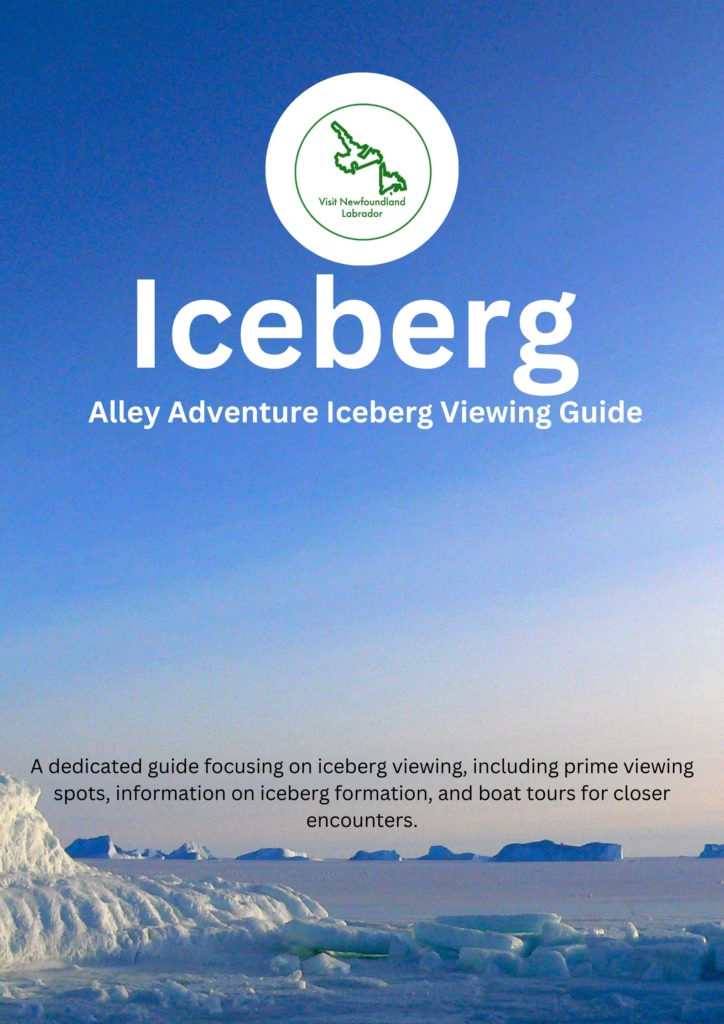
Icebergs in Newfoundland
Icebergs are typically seen off the coast of Newfoundland from late spring to early summer. The best months for iceberg viewing are usually May and June. If it’s within this timeframe, you can likely see icebergs, especially in areas like Twillingate and St. Anthony.
When to see icebergs in Twillingate?
The prime time to see icebergs in Twillingate is from late May to early June. This period offers the highest likelihood of witnessing these massive ice formations as they drift southward along the coast.
Where is the best place to see icebergs?
The best places to see icebergs in Newfoundland include Twillingate, St. Anthony, Bonavista, and Fogo Island. Twillingate is often called the “Iceberg Capital of the World” due to its high iceberg count and accessibility.
What is the best month to see icebergs in Newfoundland?
The best month to see icebergs in Newfoundland is May. During this month, the icebergs are plentiful, and the weather is often more favourable for boat tours and coastal viewing.
How long do icebergs last in Newfoundland?
Icebergs can last from a few weeks to several months in Newfoundland waters. Their longevity depends on their size, the water temperature, and the weather conditions. Typically, icebergs seen off Newfoundland begin their journey from Greenland and take about 1-2 years to reach the island.
Where is Newfoundland Iceberg Alley?
Iceberg Alley refers to the stretch of ocean off the coast of Newfoundland and Labrador, where icebergs are commonly seen. It extends from the coast of Labrador down through Newfoundland’s eastern shore, including areas like Twillingate, St. Anthony, and Bonavista.
Are there icebergs in Newfoundland in August?
By August, the number of icebergs in Newfoundland significantly decreases. While it’s possible to see the occasional iceberg, they are much rarer than the peak months of May and June.
What month is the warmest in Newfoundland?
July is typically the warmest month in Newfoundland, with a temperatures ranging from 15°C to 20°C. This makes it a popular time for visitors seeking to explore the island’s natural beauty.
Where to see whales in Newfoundland?
Whale watching is popular in Newfoundland from June to September. The best locations include St. John’s, Trinity, Bonavista, and Witless Bay Ecological Reserve, renowned for its abundant marine life, including humpback whales.
Can you see the Northern Lights from Newfoundland?
You can see the Northern Lights from Newfoundland, particularly in the more northern and remote parts of the island. The best times are during the fall and winter when the nights are the longest and the skies are the darkest.
How close to Newfoundland did the Titanic sink?
The Titanic sank about 370 miles south-southeast off the coast of Newfoundland. The nearest land to the wreck site is the southeastern tip of Newfoundland.
How close is the Titanic to Newfoundland?
The Titanic’s wreck is located approximately 370 miles off the coast of Newfoundland. This proximity made Newfoundland a critical point in the communication and rescue efforts following the disaster.
Where did the Titanic sink off Newfoundland?
The Titanic sank in the Atlantic Ocean, approximately 370 miles south-southeast of Newfoundland coast.
Are there polar bears in Newfoundland?
Polar bears are not native to Newfoundland itself, but they occasionally appear on the northern coast of Labrador, particularly when sea ice drifts south from the Arctic.
What is the iceberg capital of Canada?
Twillingate, a small coastal town in Newfoundland, is known as the “Iceberg Capital of the World” due to its frequent and spectacular iceberg sightings during the peak season.
How fast do icebergs move?
Icebergs generally drift at about 0.7 kilometres per hour (0.4 miles per hour). However, their speed can vary depending on ocean currents, winds, and the iceberg’s size.
Why are icebergs sometimes black?
Icebergs appear black when they contain a high amount of sediment and debris. This can occur when icebergs calve off glaciers that scrape the land, picking up rocks and soil, which then get frozen into the ice.
Does the Atlantic Ocean in Newfoundland freeze?
The Atlantic Ocean around Newfoundland does not freeze over due to its relatively warmer temperatures than Arctic waters. However, sea ice and icebergs from the Arctic can drift into Newfoundland waters, especially during the spring.
Are there puffins in Twillingate?
While puffins are not commonly found in Twillingate, they are prevalent in other parts of Newfoundland, such as the Witless Bay Ecological Reserve. Twillingate is more famous for its iceberg and whale sightings.
What is the best time to see whales in NL Newfoundland?
The best time to see whales in Newfoundland is from June to September. Humpback whales, minke whales, and other species migrate through Newfoundland coastal waters during this period.
Is the tip of the iceberg visible?
Yes, the tip of the iceberg is visible above the water, but it represents only about 10% of its total mass. The remaining 90% is submerged underwater, making icebergs particularly dangerous for ships.
Can you see icebergs in Newfoundland in July?
Yes, you can still see icebergs in July in Newfoundland, although they are less common than in May and June. By July, many icebergs have drifted further south or melted.
Where is the best place to see icebergs?
Twillingate, St. Anthony, Bonavista, and Fogo Island are the best places to see icebergs in Newfoundland. These locations offer optimal viewing points and tour opportunities.
How often can you see northern lights in Newfoundland?
The Northern Lights can be seen in Newfoundland several times a year, especially in the fall and winter months. The frequency depends on solar activity and the clarity of the night skies.
Why is it called Iceberg Alley?
The stretch of water known as Iceberg Alley gets its name from the numerous icebergs that travel through this area each year. The icebergs originate from Greenland and drift down the Labrador Current past Newfoundland and Labrador.
When should I visit Iceberg Alley?
The best time to visit Iceberg Alley is from late May to early June. During this period, the highest concentration of icebergs can be seen, offering the most spectacular views.
Can you swim in Newfoundland in August?
Yes, you can swim in Newfoundland in August, especially in the warmer, sheltered areas like lakes and coves. However, the ocean waters remain pretty cold, typically around 12-15°C, so swimming in the sea can be chilly.
How hot is Newfoundland in July?
Newfoundland experiences its warmest weather in July, with a temperatures ranging from 15°C to 20°C. Some days can be warmer, especially inland and away from the coastal breezes.
These are the best travel planning resources you should use.
Looking to book your trip to Newfoundland and Labrador? Use these resources that are tried and tested by other travellers like you who vacation in Newfoundland and Labrador. Bookmark these links. Save them for future reference.
Booking Flights, Hotels or B&B: Start planning your next vacation trip by finding the best flight, hotel or b&b deals. Book Here
Finding things to do in Newfoundland and Labrador on TripAdvisor and Viator is not hard. Enjoy boat tours, whale watching, icebergs watching, kayaking and other activities.
You can also find low prices on hotels, B&B and cabins with these two providers. If you are located in Canada, the USA, the UK or Europe, use Booking.com, and if you are in Canada, the USA or anywhere else, use TripAdvisor.
Car Rental: Here is what we recommend:
When you book with Rentalcars.com, you can compare prices and find the best vehicle for your trip. Economybookings.com Display all their vehicle on the website with a detailed description. They display high-quality photos and a user rating as well. Qeeq.com serves road trip travellers like you from different countries by working with car rental companies worldwide.
Get compensated if your flight is delayed or cancel
AirHelp and Compensateair will help you with flight delays, cancellations, or denied boarding. All you need to do is to submit your flight details, and they will handle the claim process on your behalf. They will handle all the paperwork, airline negotiations, and legal proceedings.
Do you need more help planning your trip?
Check out our Resources Page, where we highlight all the resources and companies you can use to assist with your planning.
Where can I find more information about travelling to Newfoundland and Labrador? Here are helpful resources for planning your trip:
Newfoundland and Labrador Tourism | Travel Canada | The Rooms Provincial Museum
